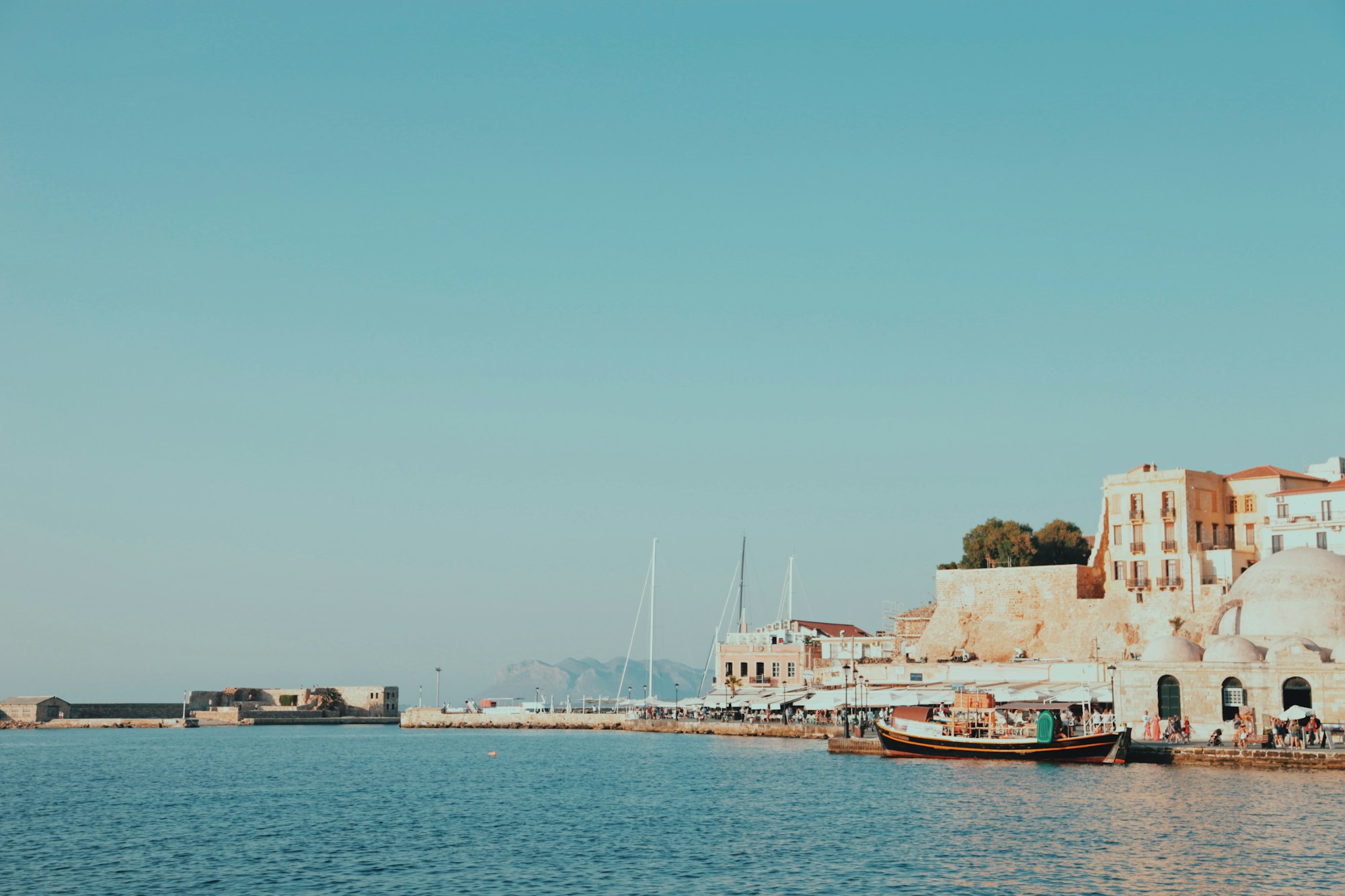Chania Culture Guide: History, Customs, Festivals & Traditions
Discover Chania's rich history, vibrant customs, unique festivals, and cherished traditions in this comprehensive cultural guide.

Chania Culture Guide: History, Customs, Festivals & Traditions
1. Introduction
Chania, the captivating city on the northwest coast of Crete, Greece, is a cultural treasure trove that uniquely blends ancient history with modern vivacity. This guide provides a comprehensive exploration of Chania's history, customs, festivals, and traditions. Join us in an immersive journey through this enchanting destination.
2. Historical Context
Chania's history is a rich tapestry of influences from various civilizations, each leaving an indelible mark on its culture, architecture, and way of life.
The Minoan Era
The roots of Chania can be traced back to the Minoan civilization, which flourished around 3000 BC. The ancient city of Kydonia, located near modern-day Chania, was one of the most significant Minoan cities, known for its agrarian economy and trade connections.
Classical Antiquity
Following the decline of the Minoans, the region saw the rise of classical Greek influence. Chania came under the control of the Dorian Greeks and later became a part of the Roman Empire. Remnants of this period, including Roman mosaics and ancient ruins, can still be seen in various parts of the city.
Byzantine and Venetian Periods
With the fall of the Western Roman Empire, Chania fell under Byzantine rule, bringing with it a wave of Christian influence. The most notable transition came in 1204 AD when the Venetians took control, leaving a lasting legacy in the form of stunning architecture, including the Venetian Harbor and numerous fortresses.
Ottoman Rule and Modern Era
The Ottomans seized Chania in 1645, introducing new cultural and architectural elements like minarets and baths. It wasn’t until 1913 that Chania was finally united with Greece. The modern era has seen Chania evolve into a vibrant city that harmonizes its storied past with contemporary living.
3. Customs and Cultural Practices
Daily Life and Social Etiquette
The people of Chania, known as Chaniots, are famous for their warm hospitality, or "philoxenia". Family is central to daily life, and it’s not uncommon to see multiple generations living together. Visitors should always greet locals with a warm "Kalí Méra" (Good Day) and be respectful of the close-knit family structures.
Language
While Greek is the official language, many locals speak English, especially in tourist areas. Learning a few basic Greek phrases can enhance your experience and endear you to the locals.
Food and Drink
Chania's cuisine is an experience in itself. Rooted in Mediterranean traditions, meals are often a communal affair. Some must-try dishes include:
- Moussaka: A layered dish with eggplant, minced meat, and béchamel sauce.
- Dolmades: Grape leaves stuffed with rice and herbs.
- Chaniotiko Boureki: A local pie with zucchini, potatoes, and cheese.
- Tsikoudia: A traditional Cretan spirit, often enjoyed after meals.
4. Festivals and Traditions
Religious Festivals
Religious festivals play a significant role in Chania, blending spiritual fervor with local traditions.
Easter
Easter in Chania is celebrated with great enthusiasm. The Holy Week is marked by solemn processions, the lighting of thousands of candles, and communal feasts. The climax is the resurrection service, followed by a festive meal featuring lamb, red-dyed eggs, and various sweets.
Saints’ Days
Many local saints are celebrated with special ceremonies and traditional music. Among these, the Feast of Saint George and the Feast of Saint Nicholas are particularly significant, with processions, liturgies, and communal gatherings.
Cultural Festivals
The Chania Film Festival
Held annually in October, the Chania Film Festival showcases a variety of international and Greek films, attracting cinephiles from around the world. It serves as a platform for filmmakers to display their work and engage with audiences through workshops and discussions.
Renaissance Festival
This festival, held in July, celebrates the Venetian heritage of Chania. Visitors can enjoy historical reenactments, theatrical performances, music concerts, and art exhibitions, all set against the backdrop of the city's stunning Venetian architecture.
Wine and Olive Festival
Every August, this festival celebrates two of Crete’s most important agricultural products: wine and olives. With tastings, traditional music, and dance performances, it offers a deep dive into local gastronomic culture.
Local Anecdotes
Chania is rife with anecdotes and legends that add color to its cultural landscape.
The Legend of the Beach of Seitan Limania
According to local lore, Seitan Limania, a remote and beautiful beach, was once believed to be haunted by spirits. This story adds an element of mystique to the stunning scenery, drawing adventurous travelers.
The Venetian Harbor Ghost
There’s a tale of a ghost that roams the Venetian Harbor at night. Said to be the spirit of a Venetian soldier, it adds an eerie charm to the nighttime ambiance of this historical site.
5. Interesting Facts
- Chania is the second largest city on the island of Crete, following Heraklion.
- The city is divided into two parts: the old town and the modern city.
- Chania has been inhabited since the Neolithic era, showcasing a continuous human presence for thousands of years.
- The Venetian Lighthouse, one of the oldest in the world, has been guiding ships since the 16th century.
- Chania boasts a unique blend of architectural styles, from Venetian to Ottoman to modern Greek.
